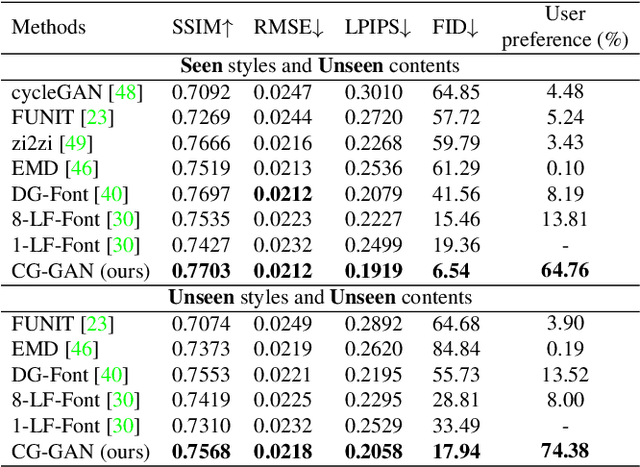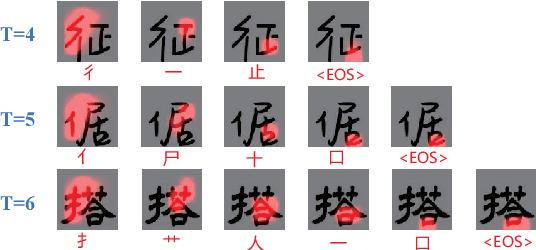Yuxin Kong
FontDiffuser: One-Shot Font Generation via Denoising Diffusion with Multi-Scale Content Aggregation and Style Contrastive Learning
Dec 19, 2023Abstract:Automatic font generation is an imitation task, which aims to create a font library that mimics the style of reference images while preserving the content from source images. Although existing font generation methods have achieved satisfactory performance, they still struggle with complex characters and large style variations. To address these issues, we propose FontDiffuser, a diffusion-based image-to-image one-shot font generation method, which innovatively models the font imitation task as a noise-to-denoise paradigm. In our method, we introduce a Multi-scale Content Aggregation (MCA) block, which effectively combines global and local content cues across different scales, leading to enhanced preservation of intricate strokes of complex characters. Moreover, to better manage the large variations in style transfer, we propose a Style Contrastive Refinement (SCR) module, which is a novel structure for style representation learning. It utilizes a style extractor to disentangle styles from images, subsequently supervising the diffusion model via a meticulously designed style contrastive loss. Extensive experiments demonstrate FontDiffuser's state-of-the-art performance in generating diverse characters and styles. It consistently excels on complex characters and large style changes compared to previous methods. The code is available at https://github.com/yeungchenwa/FontDiffuser.
* Accepted to AAAI 2024; Github Page: https://github.com/yeungchenwa/FontDiffuser
Look Closer to Supervise Better: One-Shot Font Generation via Component-Based Discriminator
Apr 30, 2022



Abstract:Automatic font generation remains a challenging research issue due to the large amounts of characters with complicated structures. Typically, only a few samples can serve as the style/content reference (termed few-shot learning), which further increases the difficulty to preserve local style patterns or detailed glyph structures. We investigate the drawbacks of previous studies and find that a coarse-grained discriminator is insufficient for supervising a font generator. To this end, we propose a novel Component-Aware Module (CAM), which supervises the generator to decouple content and style at a more fine-grained level, \textit{i.e.}, the component level. Different from previous studies struggling to increase the complexity of generators, we aim to perform more effective supervision for a relatively simple generator to achieve its full potential, which is a brand new perspective for font generation. The whole framework achieves remarkable results by coupling component-level supervision with adversarial learning, hence we call it Component-Guided GAN, shortly CG-GAN. Extensive experiments show that our approach outperforms state-of-the-art one-shot font generation methods. Furthermore, it can be applied to handwritten word synthesis and scene text image editing, suggesting the generalization of our approach.
 Add to Chrome
Add to Chrome Add to Firefox
Add to Firefox Add to Edge
Add to Edge